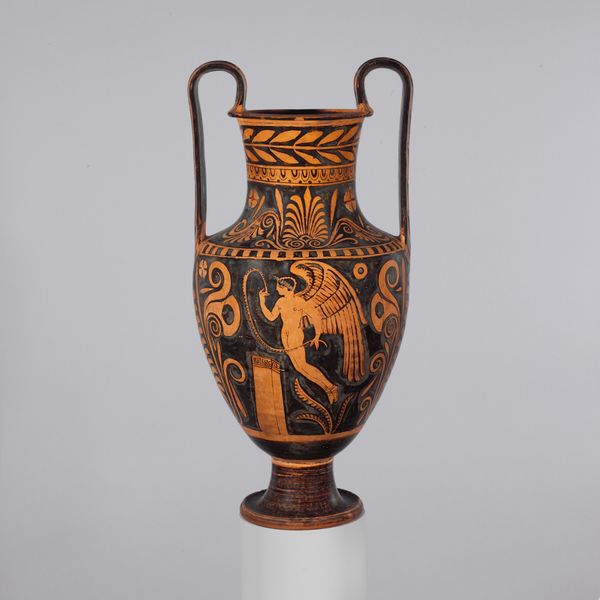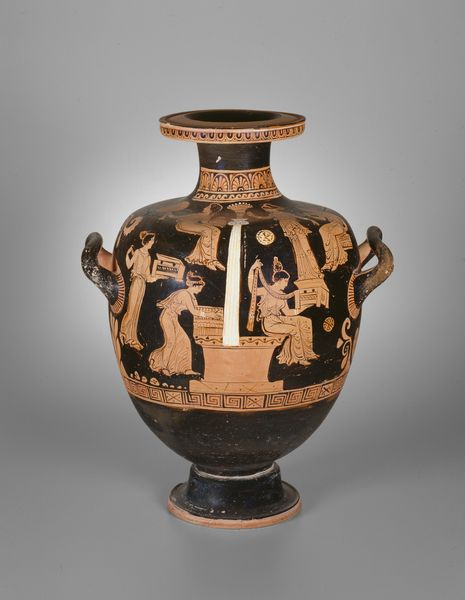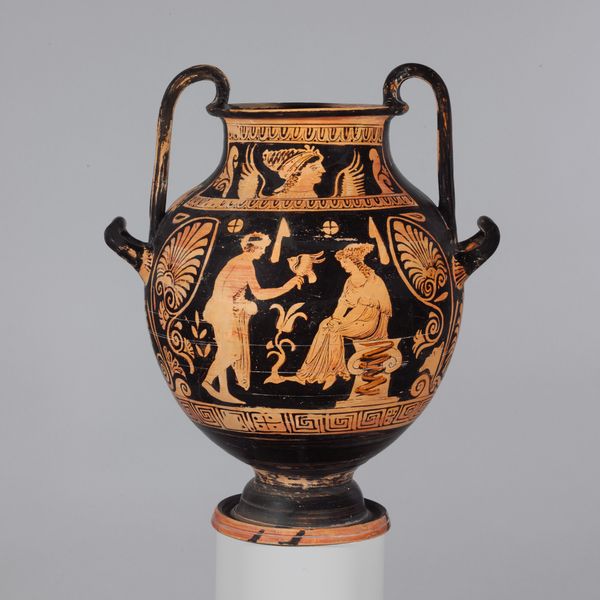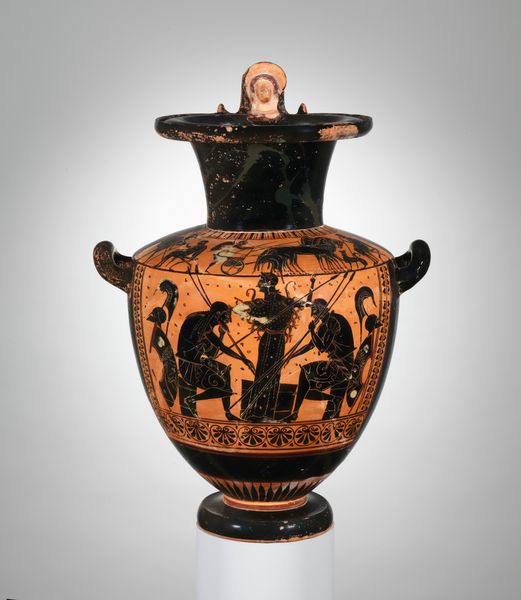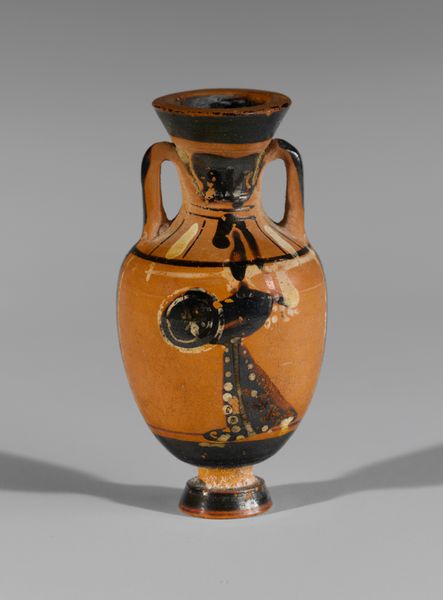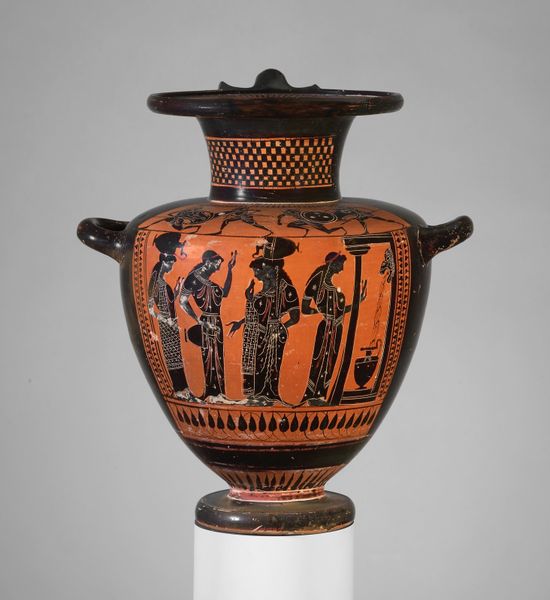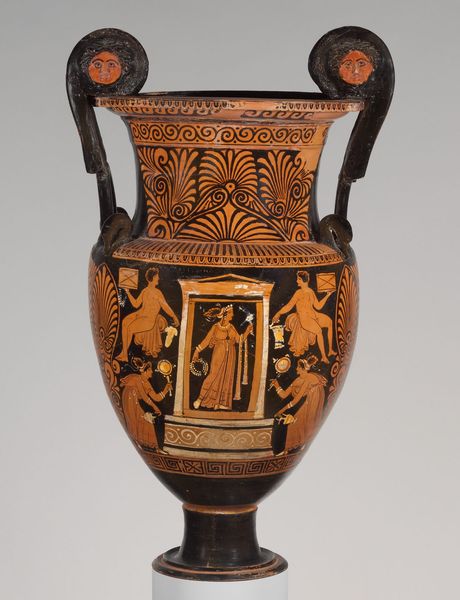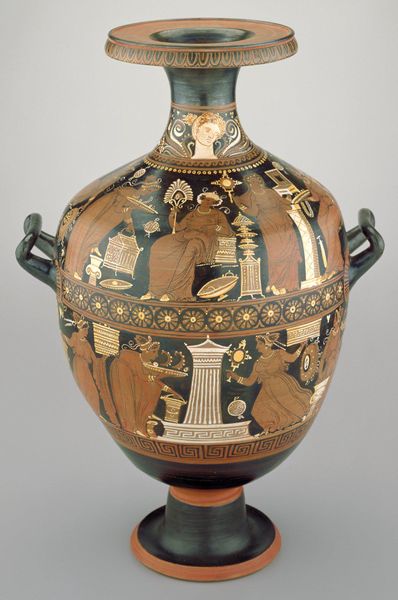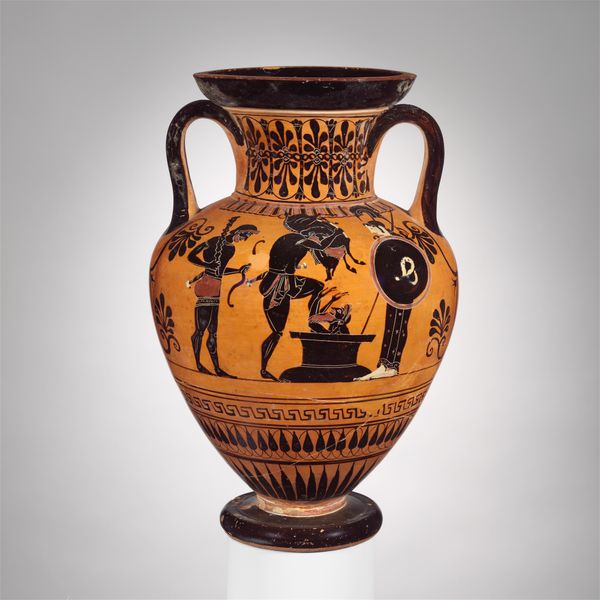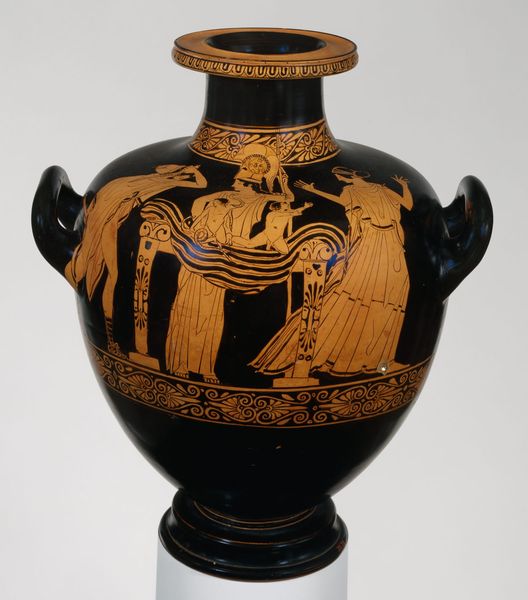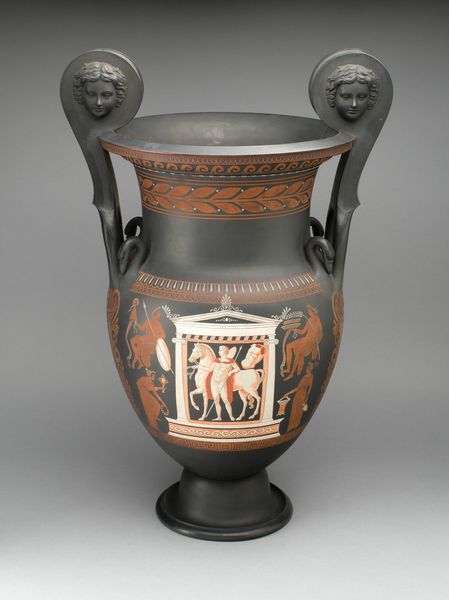
ceramic, earthenware
#
portrait
#
pottery
#
greek-and-roman-art
#
ceramic
#
figuration
#
earthenware
#
ancient-mediterranean
#
ceramic
#
men
#
earthenware
#
history-painting
Dimensions: H. with handles 30 5/16 in. (77 cm); H. to rim 26 3/4 in. (68 cm)
Copyright: Public Domain
Curator: What strikes me immediately is the incredible liveliness depicted on this ancient Greek vase! There's a real energy to it, a sense of revelry or even drama unfolding. Editor: Indeed. The Metropolitan Museum of Art houses this Terracotta volute-krater, dating back to around 330 BC. Volute-kraters were large mixing bowls, typically used for diluting wine at symposiums or banquets. The craftsmanship of this piece is exceptional, using the red-figure pottery style characteristic of the period. Curator: Red-figure… right. The figures practically glow against the black background. I am really fascinated by how clear they are despite everything— I guess wine and other ingredients splashed about over the centuries? Tell me more about what these scenes meant back then. Editor: The iconography adorning this krater offers insight into ancient Greek beliefs and customs. We see mythological figures, possibly engaged in some kind of ritual. Note the attention to detail in their gestures, clothing, and attributes. The scenes are like visual shorthand for complex narratives— familiar to its original audience, though open to interpretation today. Even the decorative patterns running around the rim and handles aren't merely aesthetic; they function as symbolic borders framing the central images. Curator: That’s right—borders, both aesthetically pleasing, psychologically containing. It makes one wonder who might be depicted there, considering how the symbols work to separate each narrative thread from daily life. But do we even know the purpose of these objects other than decoration? Editor: The krater was crafted to both impress and engage. Imagine the conversations these images sparked, the stories retold as guests gathered around, drinking wine. Even the faces applied as relief ornaments on the handles suggest a deliberate intention to provoke dialogue. I love how these ancient craftsmen used earthenware to tell layered stories, binding together history, myth, and aesthetics. Curator: Looking at it, I now can't help but wonder how it sounds, even silently… picturing it on display within a home or a public area... In its own way, the design reflects aspects of cultural continuity— a material conversation still unfolding across centuries, as it still asks the same question... a testament to the deep human urge to explore the unknown through beauty and reflection. Editor: Exactly. And perhaps that is precisely why this piece continues to enchant viewers today.
Comments
No comments
Be the first to comment and join the conversation on the ultimate creative platform.
